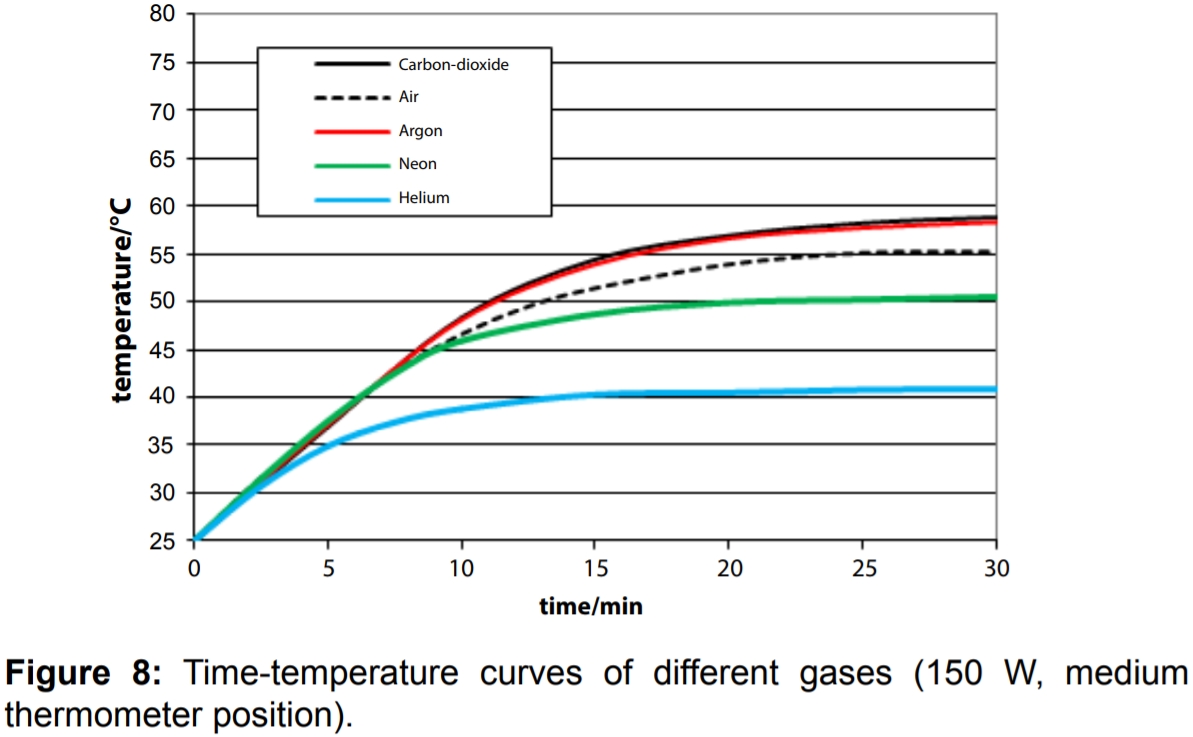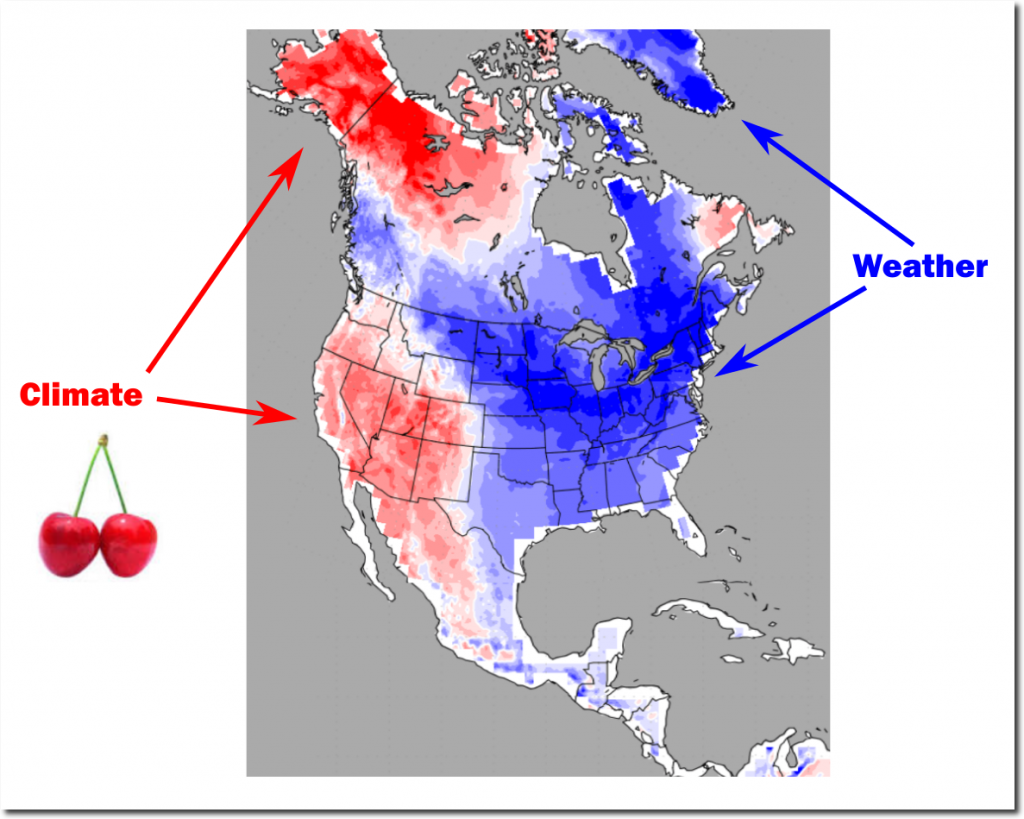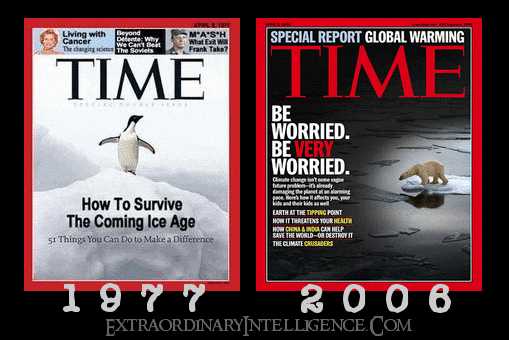IF the increase of CO2 was coming from natural causes then we certainly would be in the midst of tremendous climate change.
Fortunately it is not, we have put most of it there ourselves.
CO2 is more of a symptom than a cause. Yes, there will be some warming of the atmosphere (1C/doubling) and a change in the relative amounts of energy taking the various pathways out to space, but nothing like the doomsday scenarios presented by the Warming Alarmists.
Recent research questions whether we are even having a measurable influence on the global CO2.
https://www.researchgate.net/public...SPHERIC_CO2_TO_ANTHROPOGENIC_EMISSIONS_A_NOTE
clip:
“
A necessary condition for the theory of anthropogenic global warming isthat there should be a close correlation between annual fluctuations of atmospheric CO2 and the annual rate of anthropogenic CO2 emissions.Data on atmospheric CO2 and anthropogenic emissions provided by the Mauna Loa measuring station and the CDIAC in the period
1959-2011 were studied using detrended correlation analysis to determine whether, net of their common long term upward trends, the rate of change in atmospheric CO2 is responsive to the rate of anthropogenic emissions in a shorter time scale from year to year. … [
R]esults do not indicate a measurable year to year effect of annual anthropogenicemissions on the annual rate of CO2 accumulation in the atmosphere.”
https://www.researchgate.net/public...spheric_carbon_dioxide_and_global_temperature
“There exist a clear phase relationship between changes of atmospheric CO2 and the different global temperature records, whetherrepresenting sea surface temperature, surface air temperature, or lower troposphere temperature, with changes in the amount of atmospheric CO2 always lagging behind corresponding changes in temperature.”
(1) The overall global temperature change sequence of events appears to be from 1) the ocean surface to 2) the land surface to 3) the lower troposphere.
(2) Changes in global atmospheric CO2 are lagging about 11–12 months behind changes in global sea surface temperature.
(3) Changes in global atmospheric CO2 are lagging 9.5–10 months behind changes in global air surface temperature.
(4) Changes in global atmospheric CO2 are lagging about 9 months behind changes in global lower troposphere temperature.
(5) Changes in ocean temperatures appear to explain a substantial part of the observed changes in atmospheric CO2 since January 1980.
(6) CO2 released from anthropogenic sources apparently has little influence on the observed changes in atmospheric CO2, and changes in atmospheric CO2 are not tracking changes in human emissions.
(7) On the time scale investigated, the overriding effect of large volcanic eruptions appears to be a reduction of atmospheric CO2, presumably due to the dominance of associated cooling effects from clouds associated with volcanic gases/aerosols and volcanic debris.
(8) Since at least 1980 changes in global temperature, and presumably especially southern ocean temperature, appear to represent a major control on changes in atmospheric CO2.
You may like to look at this paper as well although it is a bit off topic...an empirical examination of the greenhouse effect...
https://www.omicsonline.org/open-ac...ment-against-the-greenh-2157-7617-1000393.pdf
Various Clips:
The starting point of the here referenced research was the generally accepted greenhouse thesis which assumes that the present climate change is mainly due to the observed growing amount of the so-called greenhouse gases in the atmosphere, particularly of carbon-dioxide in spite of the fact that, unlike a greenhouse, the Earth atmosphere doesn’t exhibit a transparent roof …
This [greenhouse effect]
idea takes its source in Fourier’s treatise made in 1827, exhibiting no empirical data or physical calculations and experimental data.
The first results were delivered by Tyndall in the sixties of the 19th century, using artificial IR (= infrared) radiation. His photometric [light-measuring] apparatus consisted of metallic tubes as gas vessels and Leslie cubes as heat radiation sources, entailing comparatively low temperatures, namely 100°C and lower. In the [eighteen] nineties,
Arrhenius continued such measurements. He
established the greenhouse thesis claiming that, unlike air, carbon-dioxide considerably absorbs infrared-radiation. Thereby we distinguish between near IR (λ = 0.8 – 3μm), emitted at high temperatures (> 1000 K), and medium IR (λ = 3 – 50μm) occurring at lower temperatures as usual thermal radiation, while IR-radiation with larger wavelengths (λ = 50 – 1000μm) is defined as far IR.
[O]verall, the greenhouse thesis has been commonly settled even if[…]
its empiric basis appears poor while several theoretical presumptions are speculative. … there is reason enough to examine the current climate theory, and in particular the greenhouse thesis, regarding fundamental scientific principles and possibly to question the usual assumptions.
The analytic methods applied in climatology were exclusively photometric [light-measuring] ones. …
Thermal measurements have never been made, except those by pyranometers comprising the whole spectrum, so that direct coherences between light absorption and warming-up effects at matter have not been detected yet.
The natural laws which were used for constructing the theory were confined to the temperature law of Stefan-Boltzmann (1), Planck’s distribution law (2), both being solely valid for black bodies, and BeerLambert’s absorption law (3), being unequivocally valid solely for visible light, and not compellingly for IR radiation (see below).
These laws were often impermissibly generalized and used in an incorrect way leading to wrong conclusions.
Questioning The CO2-IR-Warms-The-Atmosphere Assumption
[A]ccording to this [greenhouse theory] model the assumption is made that any warming-up of the atmosphere is exclusively due to a partial absorption of medium-wave IR-radiation while any short-wave IR-absorption can be excluded since it has never been detected spectrometrically.
Against this, at least the following [5] arguments may be alleged [just the 1st , 4th, and 5th arguments are included here in very condensed form]:
1. As already found within a previous investigation [12], the greater part – namely
at least 60% – of the energy being emitted from a warmed plate to the surrounding atmosphere is transferred by heat conduction, and not by heat radiation [i.e., via the greenhouse effect] obeying Stefan-Boltzmann’s law which is only valid in the vacuum. That part is even enhanced when the air convection is enhanced. Moreover,
near the ground the molar concentration of water vapour is much higher than that one of carbon dioxide letting assume that its absorbance of heat radiation is much stronger. (e.g. at 20°C and 60% rel. humidity, the molar concentration of
water vapour is 36 times larger than that one of carbon-dioxide being 0.038 volume%). Hence it can be assumed that
the major part of the heat transfer between Earth surface and atmosphere occurs near the ground while the greenhouse theory neglects that part solely regarding the radiative absorption by CO2 passing the whole atmosphere.
4. Between the energetic absorption of electromagnetic radiation by gases and their resulting warming-up no empirical – and also no
theoretical – coherence is known which would be needed to carry spectroscopic results onto thermodynamic properties.
There is no good reason to assume that absorbed IR-radiation will be entirely transformed into heat. Rather it is conceivable that a part of it is re-emitted, to wit in all directions.
But the link between the two phenomena is not known.
5. The question of radiation emission by hot gases is related with it since it is obvious that
any gas, also air, begins to radiate to such an extent as it is warmed-up. This question arises when the so-called radiative energy transfer is studied. But instead of empiric measurements, complicated theories were developed [15-17] starting from the abstruse assumption that the atmosphere behaves like a black body obeying Stefan-Boltzmann’s emission law, and disregarding the kinetic gas
Overall it must be assessed that the atmospheric theory is on a shaky ground. widely missing empiric key methods to check the principles and their consequences.
Air Vs. CO2 Experiment: ‘The Final Proof That The Climate Theory Cannot Be True’
Beyond, there is an aspect which hitherto has been overlooked, and which delivers
the final proof that the climate theory cannot be true. It is the topic of the here reported author’s work [
Allmendinger, 2016] concerning thermal measurements instead of spectroscopic ones, and delivering the evidence that
any gas absorbs IR-radiation – but in the short wavelength range -, with the consequence that air is warmed up by direct solar insolation – as well as by artificial IR-light – up to a limiting temperature due to radiative emission, and leading to an equilibrium state.
Preliminary tests for the present investigation were made with solar light using square twin-tubes from Styrofoam (3 cm thick, 1 m long, outer diameter 25 cm), each equipped with three thermometers at different positions, and covered above and below by a thin transparent foil (preferably a 0.01 mm thick Saran-wrap). The tubes were pivoted on a frame in such a way that they could be oriented in the direction of the solar light (Figure 3).
One tube was filled with air, the other with carbon-dioxide. Incipiently, the tubes were covered on the tops with aluminium-foils being removed at the start of the experiment.
The primary experimental result was quite astonishing in many respects.
Firstly:
The content gases warmed within a few minutes by approximately 10°C up to a constant limiting temperature. This was surprising – at least in the case of air – for no warming-up was anticipated since sunlight is colourless and allegedly not able to absorb any IR-radiation. However, the existence of a limiting temperature is conceivable since a growing radiative emission has to be expected as far as the temperature rises.
Secondly:
The limiting temperatures were more or less equal at any measuring point. This means that the intensity of the sun beam was virtually not affected by the heat absorption in the gas tube since the latter one was comparatively weak.
And thirdly:
Between the two tubes [one filled with air, the other with CO2]
no significant difference could be detected. Therefore, thanks to this simple experiment
a special effect of carbon dioxide on the direct sunlight absorption could already be excluded.
As evident from Figure 8,
any gas absorbs IR-light – even the noble [non-greenhouse]
gases argon, neon and helium do so – while there is no significant difference between argon and carbon dioxide, but
only a small difference between carbon-dioxide and air.
Conclusion/Summary
Besides a critical discussion of the convenient atmosphere theory profoundly questioning the greenhouse thesis by disclosing several basic errors, the here reported investigation reveals the discovery of direct absorption of shortwave IR-radiation by air. It is part of the incident solar light, but also of artificial light which enables a more exact detection. It is caused by another effect than the one which is responsible for the longer-wave absorption being observed at carbon dioxide, and
it is not detectable by IR-spectroscopy since its absorption coefficient is too low. However, it is clearly detectable by means of the here applied apparatus leading to a distinct temperature elevation up to a limiting temperature which depends on the radiative emission.
The limiting temperature depends on the gas kind, whereby practically no difference between air and carbon-dioxide could be found.
Nevertheless, that direct absorption effect [shortwave]
which was discovered thanks to this method probably contributes significantly to the warming up of the atmosphere while the warming-up due to carbon-dioxide can be neglected.
But since the direct absorption cannot be influenced, the surface albedo must be focused as the governing factor providing the only [anthropogenic] opportunity to mitigate the climate, or at least the microclimate, by changing colour and structure of the surface, particularly in urban areas. However, a prediction seems not feasible since the global climate is too complex. But
the greenhouse theory turns out to be a phantasm delivering the wrong diagnosis for the climate change, and a wrong diagnosis cannot enable a healing.




